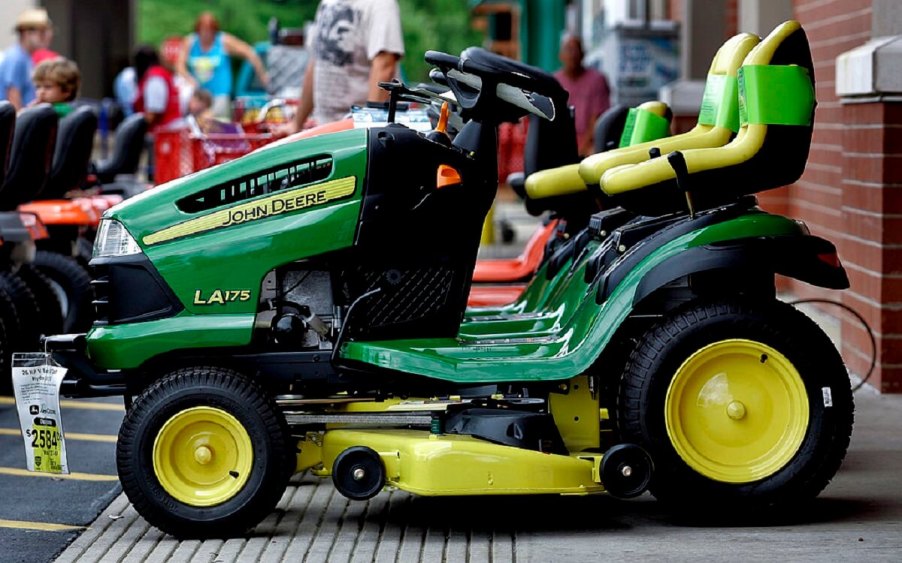
First-Time Lawn Mower Buyer? Here’s How To Pick the Right Mower for Your Lawn
Ok, so you bought your first home, your grass is getting unruly, and you don’t have a lawn mower for routine lawn maintenance. Don’t dwell on those stares from Chuck and his “perfectly manicured lawn”; you can get the right tool to kick your grass, too. So how do you pick the correct self-propelled, electric riding mower, lawn tractor, or zero-turn mower for your lawn?
How do I know what mower to buy?

First-time lawn mower buyers should take factors like their level of mobility, lawn size, topography, and budget when choosing the right mower for your landscape. For instance, a suburban home with a ¼ acre of lawn space probably doesn’t require a high-dollar riding mower.
However, if physical concerns preclude you from pushing a self-propelled mower, a small riding mower can speed up your lawn maintenance and take the strain off your back and knees. Moreover, a riding mower or lawn tractor with a hydrostatic transmission and 22 horsepower will have little issue traversing steep hills on a sloped property.
Still, electric self-propelled units take swappable power packs like the RYOBI 40V batteries. Better yet, some can cost under $200 and tackle a small lawn with relative ease.
What is the right size mower?
According to Popular Mechanics, ¼ acre lawns or smaller are self-propelled territory. Further, anything above that size might warrant a riding or zero-turn unit for ease, time management, and comfort.
| Self-propelled | ¼ acre or smaller |
| Riding | ¼ acre to 2.0 acres |
| Zero-turn | Anything above 2.0 acres |

Of course, these are simply guidelines. Some owners with large properties might not have the budget for a gleaming, new commercial zero-turn mower. In those cases, a preowned model or having the patience to use a riding mower is an option.
Additionally, zero-turn mowers tend to have the easiest time balancing large lawns and tight spaces. Still, zero-turns are often more expensive than lawn tractors. For instance, Lawn Love says the average lawn tractor costs around $3,515. However, the average zero-turn costs about $1,535 more than the home-use tractors, for a total of $5,050.
What type of lawn mower is easiest to use?

The easiest lawn mowers to operate and maintain are small, self-propelled units. Furthermore, some of the most straightforward mowers today are electric models, like the EGO Power+ and RYOBI Dual Blade 21-inch self-propelled mowers. Both models earned top scores from The Spruce for ease and performance.
Moreover, manufacturers like CRAFTSMAN, Toro, and Honda produce many gas-powered mowers with decks larger than 20 inches. While running a tool with an internal combustion engine (ICE) isn’t as straightforward as seating a removable lithium battery, these gas-powered units are cheap and straightforward.
When it comes to choosing a lawn mower for home use, most American renters and homeowners will get the job done with a self-propelled unit. However, in some rural and large-lot landscapes, a small-deck application might not cut it.



